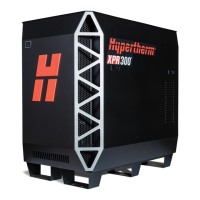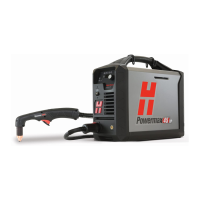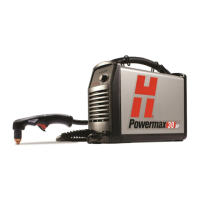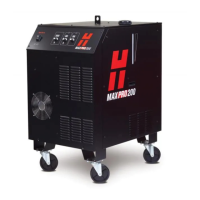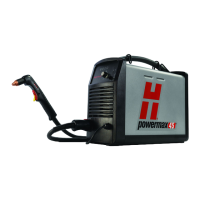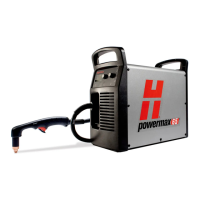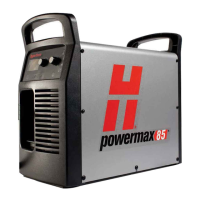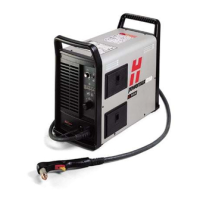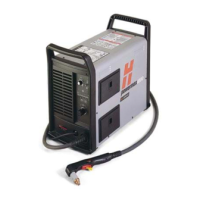Diagnostics and Troubleshooting
XPR170 Instruction Manual 810060 323
6. Replace the hoses if you find damage or kinks.
7. Reposition the hoses if you find fixable kinks.
8. Replace any fitting that has damage.
9. Tighten loose connections if found.
10. If you have an XPR cutting system equipped with a VWI or OptiMix gas connect console, make
sure that the shield water quality is good. Refer to Shield water requirements (VWI and OptiMix)
on page 52. Bad quality can have a negative effect on the shield water regulator. This can cause
diagnostic codes for low inlet pressure.
11 . If you cannot find or resolve the problem with these corrective actions, contact your cutting
machine supplier or regional Hypertherm Technical Service team.
Shield gas inlet pressure in the torch connect console diagnostic codes (702 – 705)
1. Look at the CNC screen or XPR web interface to identify the inlet pressure inside the torch
connect console. Look at:
The N
2
inlet pressure (P4) for code 702.
The O
2
inlet pressure (P4) for code 703.
The air inlet pressure (P4) for code 704.
The Ar inlet pressure (P4) for code 705.
WARNING
ELECTRIC SHOCK CAN KILL
Disconnect electrical power before doing troubleshooting or diagnostic work.
All work requiring removal of the plasma power supply outer cover or panels
must be done by a qualified technician.
See the Safety and Compliance Manual (80669C) for more safety
information.
